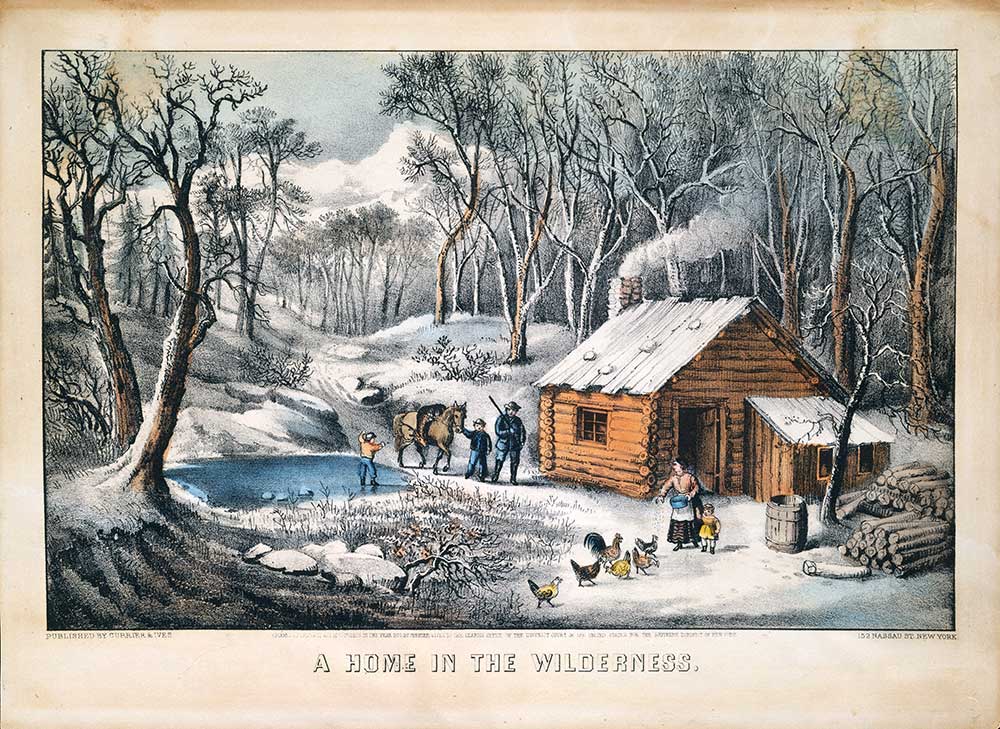
Terrible cold* blanketed the Northern Hemisphere with wintry weather in the summer of 1816. The notorious cold destroyed most of the crops in the Town of Lumberland, New York. Only rye, potatoes, and onions grew. Not even a blade of corn sprouted.
Asa Hickok, his sons Reuben, David, and Justus, and other Lumberland farmers, dressed in their heaviest clothing, cradled, raked, and bound their rye crop in their deer skin mittens.
In 1816, Lumberland, New York was the proud owner of some 150,000 acres of rolling hills carpeted with huge ancient trees, interspersed with streams and ponds. Lumbering was the main occupation of its few residents.
Halfway Brook flowed south through the middle of Lumberland to the Delaware River, the town’s southwestern boundary and the New York-Pennsylvania border.
Though Lumberland had been completely stripped of its entire white pine trees, the area was still heavily forested with yellow pine, hemlock, oak, hickory, and other trees. Some were two hundred years old.
Nine sawmills dotted Halfway Brook’s nine miles. There were sawmills on at least four other streams which also fed into the Delaware River.
The Hickok Homestead
The Asa Hickok family had lived in the area for four years and at least had an established garden. Their Homestead with its house and barn sat near Halfway Brook, two miles north of the Delaware River.
A falls on a stream now called Hickok Brook, connected with Halfway Brook on its way south to the Delaware River.
Near the juncture of Halfway Brook and the Delaware River was the River, a hamlet later called Barryville.
A crude, rope-guided ferry was the only way to cross the Delaware River from Barryville south to Shohola, Pennsylvania.
James Eldred Homestead
James Eldred, his wife Polly, five children, and his twice-widowed mother had recently arrived—two days before 1816 and ten days before Phebe Maria Eldred was born.
Though 1816 was a terrible year to start a garden, James Eldred at least had one of the nine sawmills on Halfway Brook. The mill sat beside their old log cabin home, four miles north of the Delaware River. Their property, on two cleared acres near the middle of Halfway Brook, was the southeast corner of the future Halfway Brook Village—much later renamed Eldred.
1816 Lumberland
In 1816 Lumberland was sparsely settled. Bears, wolves, foxes, coyotes, and wild cats hunted in the thickly forested area, and occasionally helped themselves to the settlers’ chickens and sheep.
There were only four frame houses, nine frame barns, and a gristmill. The animals included 19 horses, 34 oxen, and 34 cows. There were ten wagons.
One person owned a clock which furnished the time for the town. James Eldred owned one of three watches.
The Congregational Church
A Congregational Church met in log cabins or barns in remote areas near the Delaware River, in Lumberland. In the fall of 1814 some of the meetings were held at the Hickok Farm. In 1815 Sylvia Hickok, daughter of Asa and Esther, died at the age of 34. Sylvia was buried in what is now the Old Eldred Cemetery.
• The cold summer is now thought to have been a result of the volcanic eruption of Mount Tambora in the Dutch East Indies in 1815.







